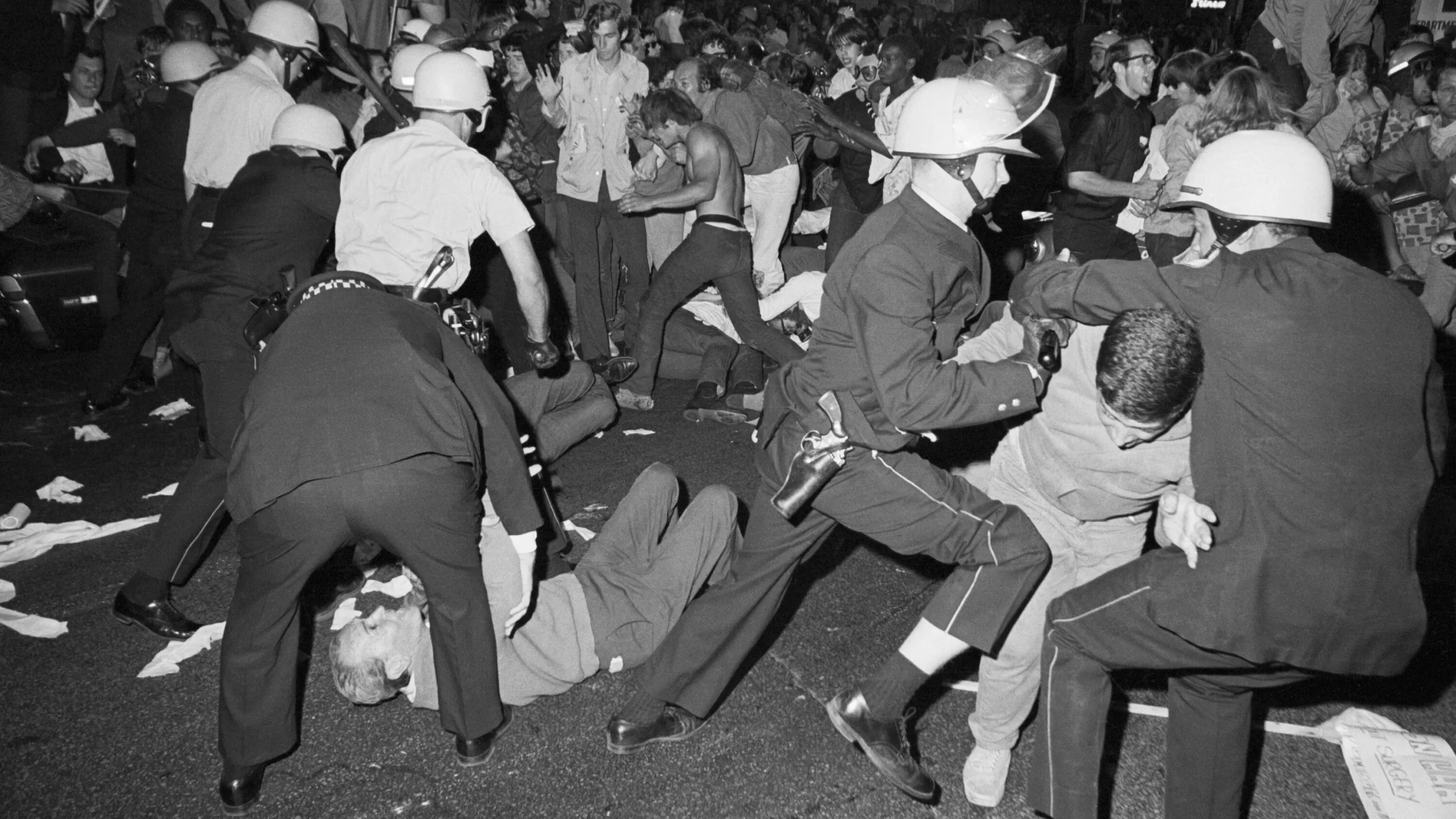Estimated reading time: 4 minutes
In the grand, cyclical tradition of American dissent, the ghosts of the 1968 antiwar demonstrations have apparated right into today’s political strife. The original uproar, infused with youthful vigor and impassioned cries for change, set the stage for decades of political ballet—or more accurately, a mosh pit. Fast forward to now, and we’re witnessing a revival of this spirit, as protests over international conflicts begin to mirror criticisms of the Vietnam War era.
The Breakdown
- Protest Fashion: Tie-Dye Is Out, But Angst Is In
- Back in ’68, it was all peace signs and flower crowns. Fast-forward, and today’s protester wardrobe favors a blend of vintage Army surplus and whatever was on sale at Urban Outfitters. Let’s just say, the flair is strong, but the polyester is stronger.
- Back in ’68, it was all peace signs and flower crowns. Fast-forward, and today’s protester wardrobe favors a blend of vintage Army surplus and whatever was on sale at Urban Outfitters. Let’s just say, the flair is strong, but the polyester is stronger.
- Soundtrack to a Revolution: Turntables to TikTok
- The iconic protest songs of the 60s, carrying lyrics of peace and reform, have been replaced. Cue the 21st-century soundtrack, featuring TikTok remixes and maybe a dash of Billie Eilish being plaintive. The message is the same, but hey, the bass drops harder now.
- The iconic protest songs of the 60s, carrying lyrics of peace and reform, have been replaced. Cue the 21st-century soundtrack, featuring TikTok remixes and maybe a dash of Billie Eilish being plaintive. The message is the same, but hey, the bass drops harder now.
- Sign of the Times: Cardboard Creativity
- If you thought the protest signs from the 60s were creative, today’s signs show we’ve leveled up—thanks to memes. From witty quips to outright roast sessions, the cardboard game has never been so strong… or so savage.
- If you thought the protest signs from the 60s were creative, today’s signs show we’ve leveled up—thanks to memes. From witty quips to outright roast sessions, the cardboard game has never been so strong… or so savage.
- Method of Delivery: From Streets to Tweets
- Marching in the streets? Powerful. But today’s protests also thrive online, with hashtags leading the charge. #revolutionFromTheCouch might just trend alongside #ThrowbackThursday.
- Marching in the streets? Powerful. But today’s protests also thrive online, with hashtags leading the charge. #revolutionFromTheCouch might just trend alongside #ThrowbackThursday.
- Action Figures: Heroes or Hashtags?
- While ’68 had its share of heroes, today’s movements often revolve around viral figures. These modern-day ‘leaders’ can spark a massive following with a single viral video—making Che Guevara’s beret look just a tad outdated.
- While ’68 had its share of heroes, today’s movements often revolve around viral figures. These modern-day ‘leaders’ can spark a massive following with a single viral video—making Che Guevara’s beret look just a tad outdated.
The Counter
- Who Needs the Draft? We Have Student Loans
- Forget the draft scaring the youth into the streets; today we have student loan balances scarier than any boot camp sergeant.
- Forget the draft scaring the youth into the streets; today we have student loan balances scarier than any boot camp sergeant.
- Agent Orange or Gluten?
- In the 60s, protesters could be worried about chemical warfare like Agent Orange. Today’s protester battles include gluten intolerance and the quest for the perfect almond milk latte to fuel the fight.
- In the 60s, protesters could be worried about chemical warfare like Agent Orange. Today’s protester battles include gluten intolerance and the quest for the perfect almond milk latte to fuel the fight.
- Sit-Ins vs. Sit-On-Your-Couch-and-Tweet
- Once upon a time, sit-ins at diners and schools highlighted brave souls demanding change. Nowadays, a strongly worded tweet followed by a fierce meme can muster similar national attention—all without the hassle of leaving your house.
- Once upon a time, sit-ins at diners and schools highlighted brave souls demanding change. Nowadays, a strongly worded tweet followed by a fierce meme can muster similar national attention—all without the hassle of leaving your house.
- Flower Power or WiFi Towers?
- Back then? Flowers in gun barrels. Today? It’s all about staying within the range of stable WiFi so everyone can stream the protest live.
- Back then? Flowers in gun barrels. Today? It’s all about staying within the range of stable WiFi so everyone can stream the protest live.
- Peace Signs vs. Password Signs
- The 60s had peace signs waving energetically in crowds. Swap that with today’s desperate search for WiFi passwords at cafes to ensure the protests are Instagram-ready.
- The 60s had peace signs waving energetically in crowds. Swap that with today’s desperate search for WiFi passwords at cafes to ensure the protests are Instagram-ready.
The Hot Take
Here’s a steamy cup of reality for the freshly brewed chaos of today’s protest scene. If we’re really itching for a solution and not just an Instagram story, let’s blend a touch of ’68 bravery with modern savvy. Start by putting down the smartphones and picking up a strategy that involves real action—like engaging with actual legislative processes (crazy, right?).
Add in some old-school face-to-face community organizing with whatever new tech can actually amplify the message beyond a meme. And here’s a kicker: maybe keep wearing the tie-dye, because, let’s face it, it’s a classic.
We might just find that this blend of old sweat and new tech can turn today’s fiery tweets into tomorrow’s fiery triumphs. And for the sake of not repeating history, could someone maybe invent protest signs that double as Wi-Fi hotspots? You’re welcome, future revolutionaries.
From the streets of the 60s to the digital squares of today, one thing remains unchanged—our charming belief that with just the right chant, or tweet, we can indeed change the world.



